Joyce Tenneson (b. 1945) has become one of the leading photographers of her generation. Working with large format cameras, she creates still-lifes, portraits, and landscapes that evoke a classic stillness and composure.
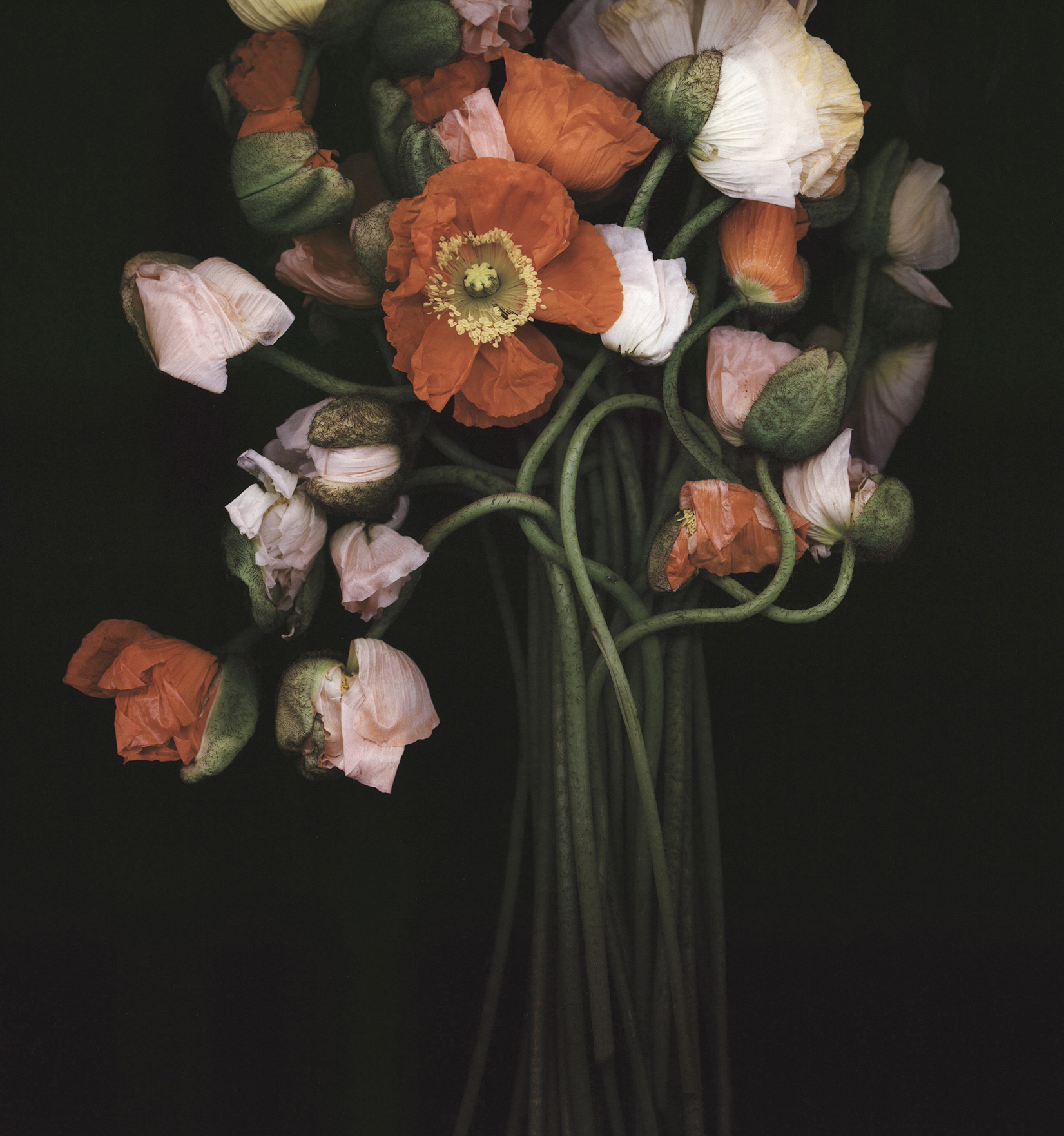
Poppy Bouquet, 2015
Archival pigment print
RE-RIDING HISTORY reflects on what was to become the prequel to the Carlisle Indian School—the incarceration and mandatory acculturation of seventy-two Plains Indians at Fort Marion (St. Augustine, 1875–1878). For this exhibition, curators Emily Arthur, Marwin Begaye, and John Hitchcock commissioned works by seventy-two Native American and non-Native artists to make works on paper that consider the experiences of the warriors held at Fort Marion under the command of Lt. Richard Pratt (founder of the Carlisle Indian School). The works share the same dimensions and paper as the historic ledger drawings made by, and convey experiences of, the Indians at the fort.
For additional information, consult the exhibition website RE-RIDING HISTORY.
RE-RIDING HISTORY is part of the Carlisle Indian School Centennial Commemoration, which focuses on the closing of the Carlisle Inidan School (1879–1919) a century ago.
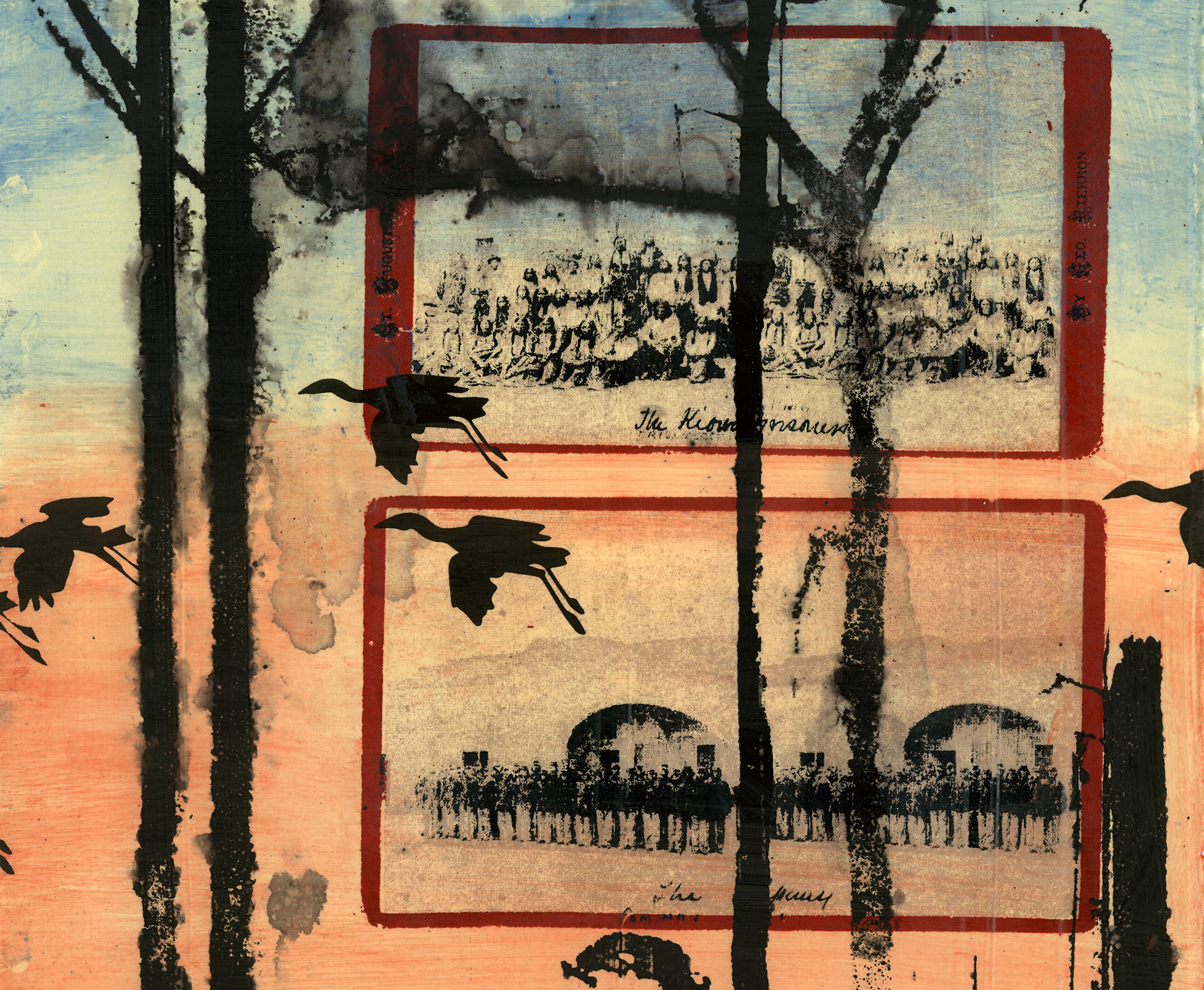
Emily Arthur
Re-Rembering (not history), detail
RESISTING THE MISSION is an exhibition of contemporary baskets by Shan Goshorn, who infused her designs with text and imagery that address issues central to the Native American experience. This selection of works by Goshorn focuses on the Carlisle Indian School, including a remarkable fourteen-basket set entitled Resisting the Mission; Filling the Silence made especially for this exhibition. Additional works are on loan from museums and private collections, including Educational Genocide, a basket that masterfully weaves together words and images from the children who attended the school.
Shan Goshorn (1957–2018)
On December 1, 2018, Shan Goshorn passed away at her home in Tulsa, Oklahoma. The staff of The Trout Gallery and members of the Dickinson College community offers condolences to her friends and family.
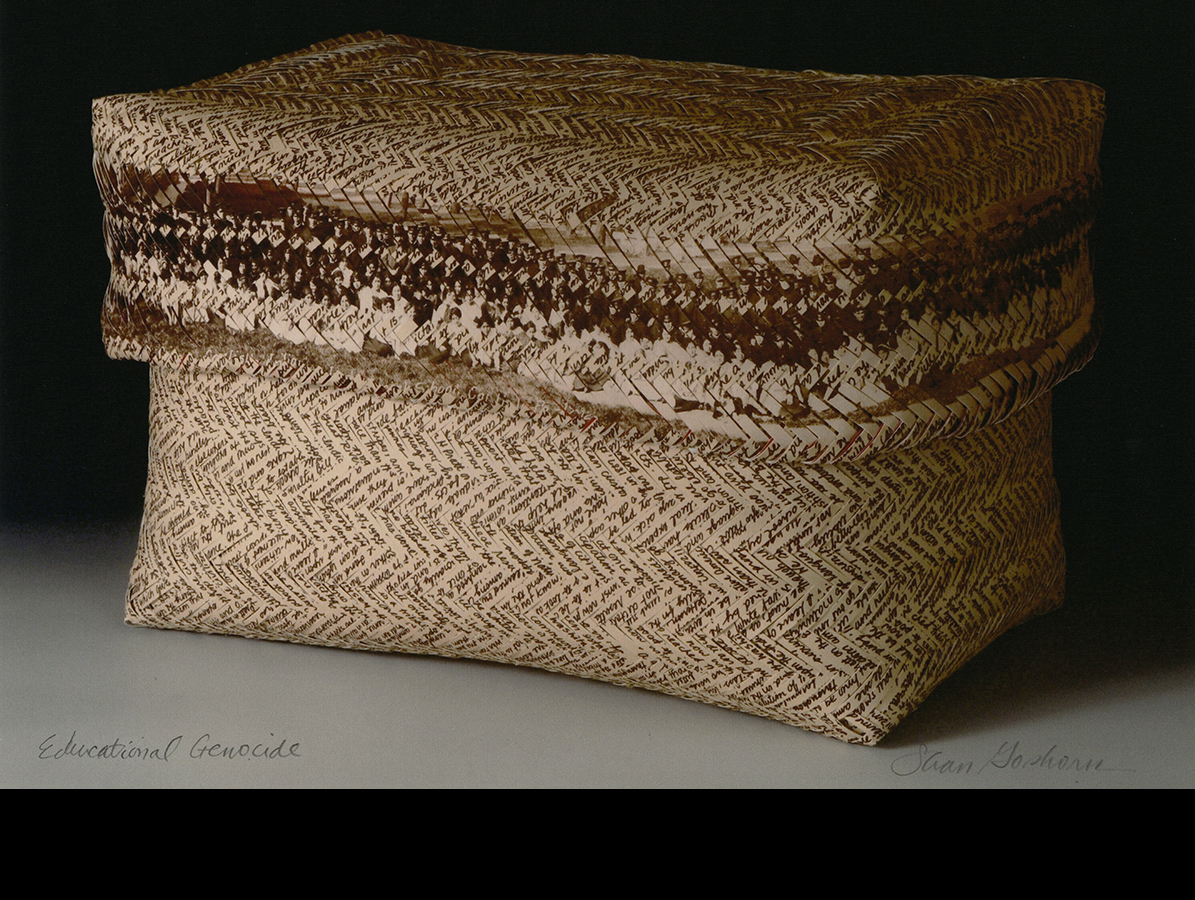
Shan Goshorn
Educational Genocide (detail)
UNLOADED is a multi-media, group exhibition that explores the historic and social issues surrounding the divisive nature of gun ownership in the United States. Curated by Susanne Slavick (Carnegie Mellon University, Pittsburgh), the exhibition presents a number of perspectives on the image and impact of guns in contemporary culture. Works by twenty-two artists examine, according to Slavick, “the role that guns continue to play in our national mythologies, suicide rates, individual and mass murder, domestic violence, and the militarization of civilian life.”
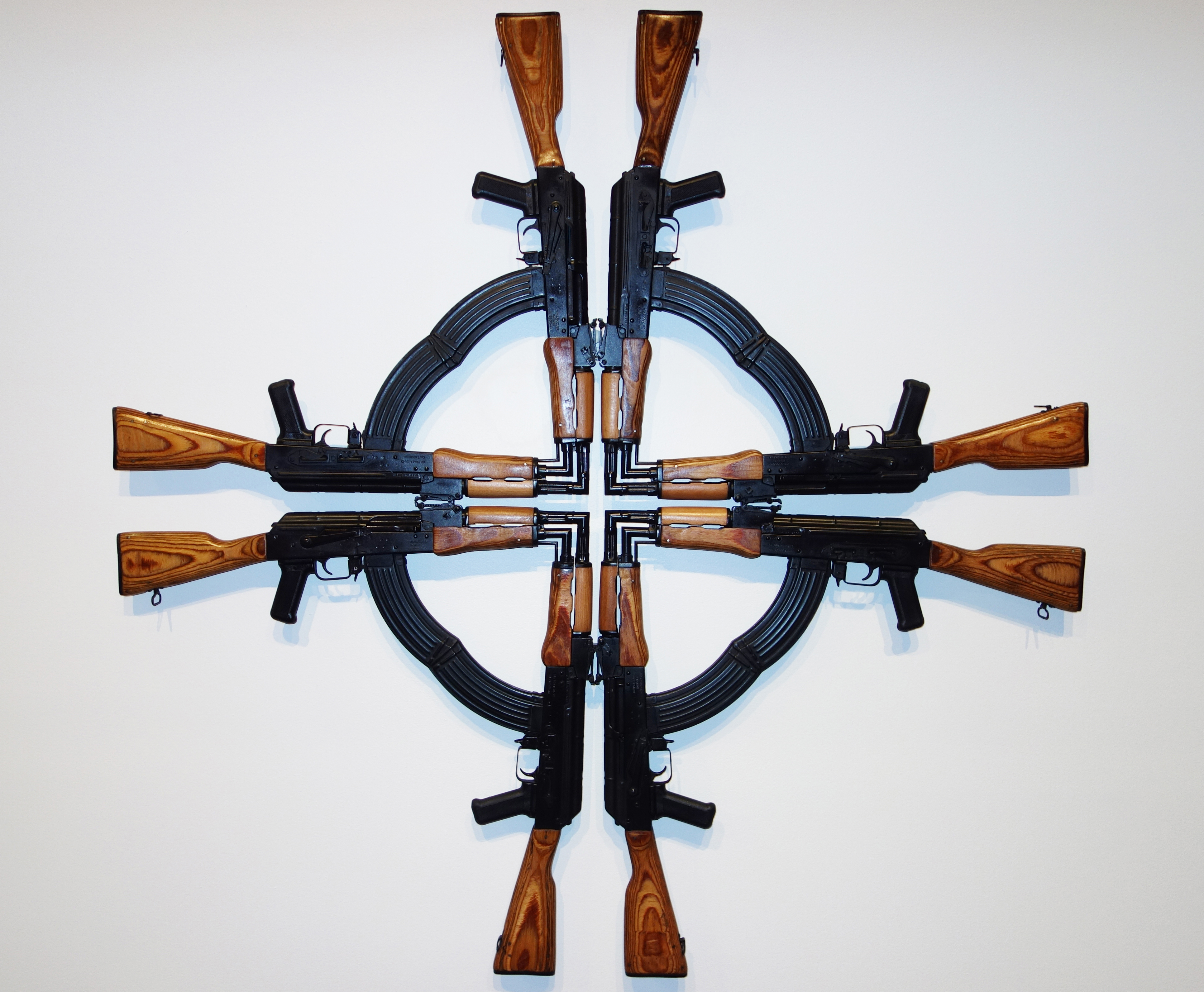
Mel Chin
Cross for the Unforgiven: 10th Anniversary Multiple
This exhibition features prints and photographs from the museum's permanent collection that focus on current political and social issues. Many of these works were acquired as part of the museum's student-selected art acqusition initiative. It features works by contemporary artists: Ken Kitano, John E. Buck, Steve Prince, Manu Brabo, Sue Coe, Toshio Shibata, Yao Lu, Hung Liu, and Lalla Essaydi.
Curated by Jacqueline Amezcua '19
SPECIAL EVENT: Sue Coe's Appropriation of Holocaust Imagery: An Evening of Shared Inquiry
APRIL 3 7-8PM: Room 235, Weiss Center for the Arts.
Please join us for an evening of shared inquiry as we explore artworks by Sue Coe currently on exhibition at The Trout Gallery as they relate to the appropriation of Holocaust imagery in the arts. An introduction to Coe’s work will be followed by a moderated discussion and contributing faculty will offer disciplinary perspectives on the topic.
Contributing Faculty: Phill Earenfight, Director of The Trout Gallery and Associate Professor of Art and Art History; Andrea Lieber, Professor of Religion and Sophia Ava Asbell Chair in Judaic Studies; Amy McKiernan Assistant Professor of Philosophy and Director, Ethics Across Campus & the Curriculum; Amy Wlodarski, Associate Professor of Music.
Co-sponsored by the Milton B. Asbell Center for Jewish Life and The Trout Gallery
Timely and Timeless
Japan's Modern Transformation in Woodblock Prints
March 1, 2019 - April 13, 2019
Timely and Timeless showcases woodblock prints from 1833 to 1959, the most transformative era in Japanese history, to examine the versatility of the woodblock print medium and interrogate the "timeless" Japan with which it is so often associated. The earliest prints in the exhibition date to the Edo period (1603-1868), which depict idealized landscapes and the world of entertainment brought about by urbanization and commercialization. Technological innovations, periodic censorship, and Western influences inspired increasingly experimental designs. Despite facing challenges from photography, lithography, and Western-style painting, the woodblock print medium remained competitive through the industrial revolution in the Meiji period, nostalgia and nationalism of the 20’s and 30’s, and the aftermath of a lost world war.
This exhibition is curated by senior art history majors Fiona Clarke, Isabel Figueroa, Mary Emma Heald, Chelsea Kramer, Lilly Middleton, Cece Witherspoon and Adrian Zhang, under the direction of Ren Wei.
Senior studio art majors Elsie Campbell, Kate Clements, Olivia Dwelley, Samantha Fonesca, Duanduan Hsieh-Song, Diane Lee, Nate Matlack, Lucy Paterson, Samantha Polinsky, Jingni Wang, Victoria Xiao and Adya Zecha present thesis projects under the direction of Rachel Eng, with Todd Arsenault, Andrew bale, Anthony Cervino and Ward Davenny.
EVAN SUMMER: Eric Denker
Evan Summer has created an impressive volume of work that is dominated by nocturnal landscapes of austere power. His prints offer remarkable visual testimony to the conflict between the elements of nature and of human creation.
Though seemingly unpopulated, they are permeated by evidence of man’s presence, represented by monumental structures in various states of decay. The ominous quality of the images results from the artist’s treatment of the terrain, of the deteriorating condition of man-made forms, and of the temporal and atmospheric conditions represented. Dark skies create dramatic passages and silhouettes in the features of the grim landscape below, relieved in some prints by streaks of rain or lightening skies that might suggest catharsis or renewal.
Summer most often concentrates on landscape imagery, although he occasionally treats other subjects. Sometimes he renders pure landscape, with no hint of human history. More often, he incorporates immense architectural forms or geometric shapes, their fabric in disarray or in varying states of disarray or in varying states of decline. Growing up in Buffalo, New York, Summer was attracted to the impressive hydroelectric and power plants that dominate the landscape around Niagara Falls. Though inspired by these specific forms, in his imagery the artist never defines the original nature or function of his constructions, only evoking some long-forgotten need for their presence.
Sometimes the history of these spaces is suggested, but much more remains a mystery—the specific content lost in the silent landscape. These foreboding images fall into discrete categories. Some represent abandoned or decaying structures; in others, large forms appear strewn arbitrarily about, as if the dynamic terrain had shifted, producing a jumble of geometric elements. A few settings suggest sites of archaeological excavation. The idea of equilibrium is paramount, for there is a stasis in which the opposing forces of nature and man have canceled one another. As a group these landscapes and nocturnes manifest a dark fantasy, a melancholy reminiscence of a forbidding future.
Most of Summer’s prints are executed in the traditional technique of etching on copper plates, often with supplemental engraving and drypoint. In some instances, aquatint, the tonal process associated with etching, is used to create broad, rich areas of gray and black. A single plate may be etched fifteen to twenty times, and may take more than a year to complete. Summer works the copper entirely by hand, and hand prints the plates on a variety of fine papers. He works outside the contemporary workshop milieu, without assisting technicians or elaborate equipment. Summer also works in collagraphy and collage. Collagraphy is a modern intaglio process involving the attaching of textural materials to a supporting plate or board to create a surface that can be inked and printed with pressure onto a sheet of paper. Summer’s interest in collagraphy has led him to create large-scale collages that engage the same landscape subjects as many of his intaglio images, but allow him to use color in ways quite different from the prints. A love of drawing and an interest in perspective are manifest in all of his work. At times, the purity and beauty of the geometry itself become the subject.

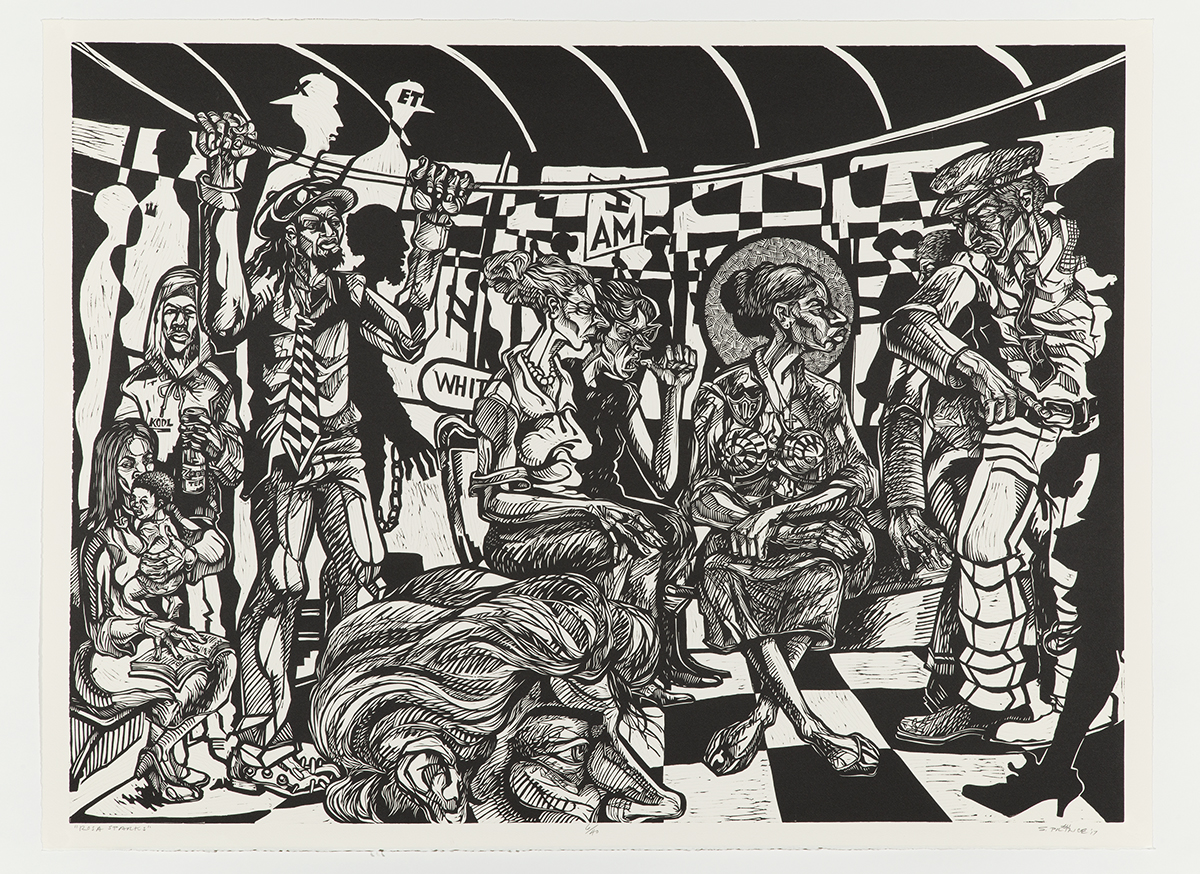









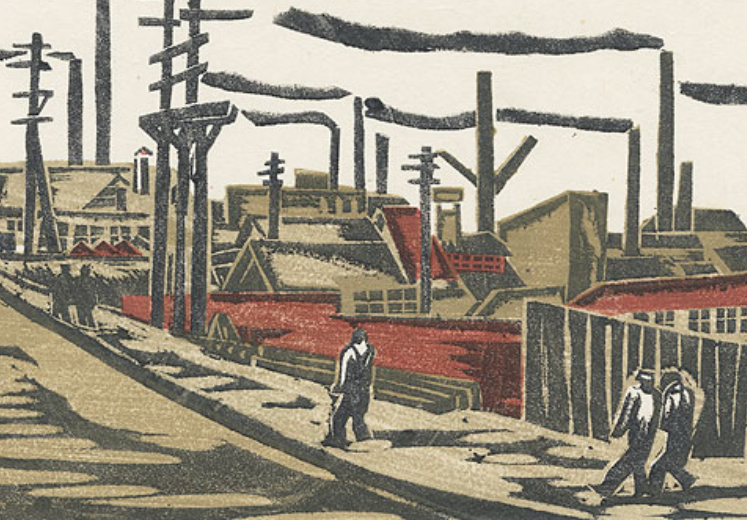












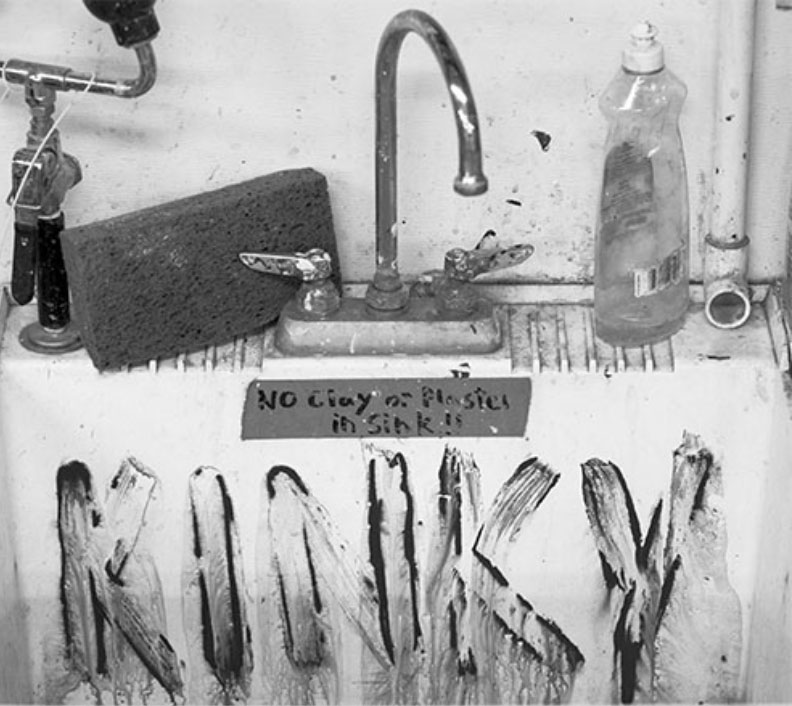












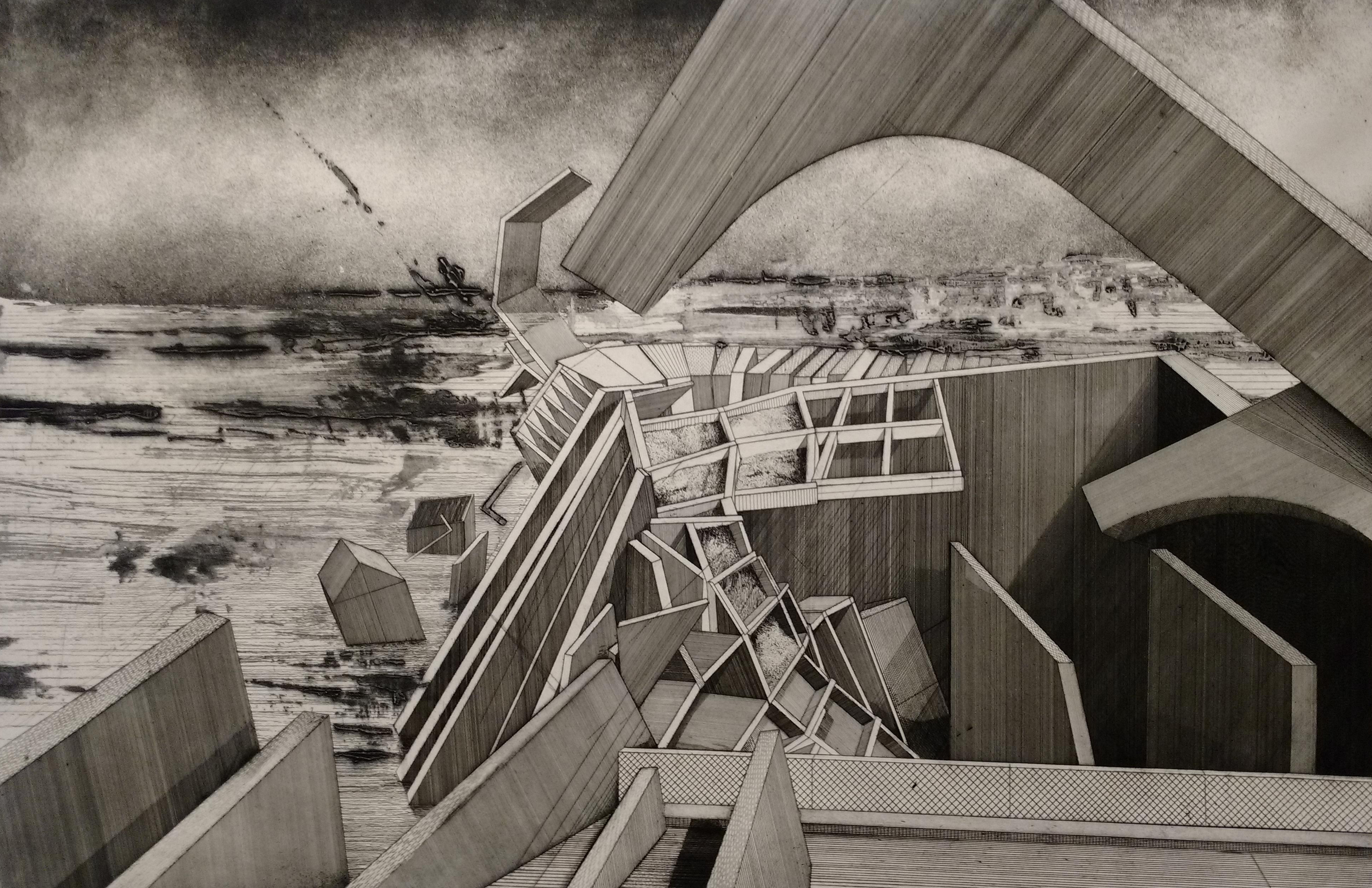

-2.jpg)





